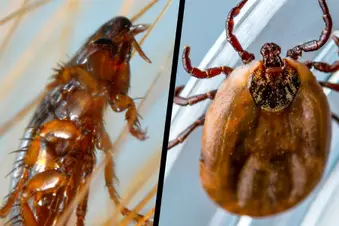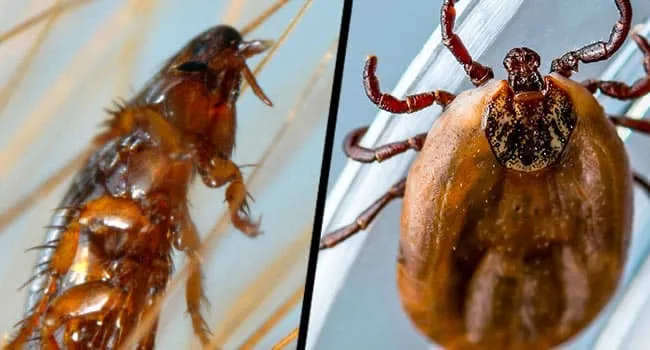IMAGE PROVIDED BY:
Dorling Kindersley / Getty Images, nechaev-kon / Getty Images
SOURCES:
ASPCA: “Fleas,” “How to Get Rid of Fleas and Ticks,” “Ticks,” “Ticks and Lyme Disease.”
Beyondpesticides.org: “Least-toxic Control of Fleas.”
DocWilliamsSPCA.org: “Fleas, Ticks and Pets: The Battle Against Parasites.”
Allan C. Drusys, DVM, chief veterinarian, Riverside County Animal Services, Calif.
EPA: “Taking Care of Fleas and Ticks on Your Pet.”
Illinois Department of Public Health, Prevention and Control: “Ticks.”
Marin County Department of Agriculture: “Marin Model School IPM Project: Fact Sheets for Parents and Teachers, Fleas.”
Michigan Humane Society: “Flea Control.”
National Pesticide Information Center: “Managing Ticks and Preventing Tick Bites.”
Oregon Veterinary Medical Association: “Fleas: Treatment and Prevention.”
Pestworldforkids.org: “Ticks.”
University of California ANR Statewide Integrated Pest Management Program: “Fleas.”
University of Florida IFAS Extension: “Fleas, What They Are, What To Do.”
University of Minnesota Extension: “Use Integrated Approach to Control Fleas.”
Washington State Department of Health: “Ticks.”










